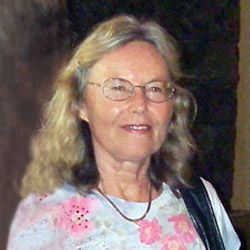SPONSOR:
National Institute for Water Resources, Water Resources Research Institute Program
PROJECT PERIOD:
03/01/2014-02/29/2016
ABSTRACT:
The Sand Island Wastewater Treatment Plant and the Honouliuli Wastewater Treatment Plant are primary treatment systems that treat effluents to be discharged a few kilometers offshore of Honolulu. The assessment of biological integrity of Hawaii’s coastal waters near to sewage outfalls is a component of water quality regulation and protection. Many types of marine organisms have been used as indicators of biological integrity but the macrobenthic soft-bottom communities have been chosen to provide a reliable measure of coastal water health near the sewage outfalls (e.g., Ambrose et al. 2009, 2011, 2015).
The use of abundance and diversity of macrobenthic species in a multivariate context is an indicator of biological integrity but a measure of ecosystem function has only been accessed when the polychaete species are classified into feeding categories (Fauchald and Jumars 1979). Energy resources gained by these different feeding methods go into reproduction and may guarantee the survival and structure of populations. Despite the value of reproduction in maintaining the equilibrium of populations, it has never been investigated as a biological measure of ecosystem health. For this reason, there is a need to understand the long-term effects of the sewage discharge on the marine ecosystem function by evaluating the reproductive capabilities of selected marine worms.The intent of this project was to investigate the spatial (near the outfalls diffusers or far field at reference stations) and temporal (along 11 years of data collection) effects of the outfalls on the reproductive capabilities of syllid polychaetes by using the data recorded in the University of Hawaii’s Water Resources Research Center’s Project Reports. This research aimed to test the hypothesis that there will be spatial and temporal differences in the reproductive capabilities of syllid polychaetes in both outfall locations.
PRINCIPAL INVESTIGATOR
JULIE H. BAILEY-BROCKProfessor (Emeritus), Zoology
Phone: (808) 956-6149
Fax: (808) 956-9812
E-mail: jbrock@hawaii.edu
